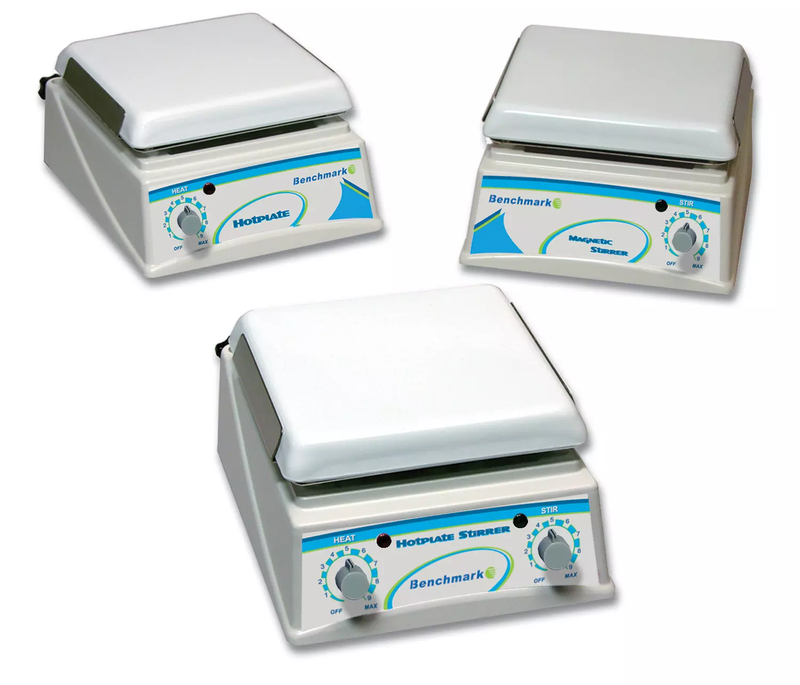Choosing the right hotplate and stirrer
May 05 2022 /
So you’re looking for a hotplate or stirrer. The choices are bewildering. We admit, we’ve got a remarkable variety in what we offer. That can be confusing.
If you get in touch with us about your needs, we’re happy to help you refine your search.
If you’re just starting out, let’s give you some basic counsel here. What are the things you should think about as you consider your needs and the various options?
We offer these questions you can ask yourself:
How stable, how precise?
If you’re doing basic work in your lab, or in the teaching unit where you’re training technicians, you may be fine with any of the ‘analog’ appliances on the market. These have been around for years, and they do the job fine, unless you really need better parameter control. If you do want that threshold ‘better’, look for units with good, bimetallic thermostats at least, and ask for what are called ‘closed-loop’ control systems. Better yet, step up from analog to digital, which is generally what people use these days anyway. These are built around microprocessors, which control things better than any human can. They’re slightly more expensive than analog units, at least for now, but if you’re serious about what you’re doing, you’ll find them worth the expense. They’re more reliable than analog devices, too, and that by itself can actually keep your costs down in the long run.
What temperature range?
Needs differ widely here. So devices differ too. What matters is what the top plate is made of. That’s what you ask your dealer about. You can get ceramic ones. These are okay in general, unless you’re planning on heating or cooling them quickly. If you do that, they’ll break eventually. You can get porcelain ones instead. These are a lot more stable, so to speak, and less vulnerable to shock cooling. People like them too because they don’t corrode, no matter what you spill on them. Their downside, and this may or may not apply to you, is that they don’t do well at very high temperatures. The default for many labs is aluminum. It won’t break, ever, and it works happily across a very wide range of temperatures. Some models are clever about this. They have aluminum plates that are coated in ceramic. Here’s a tip: your sample won’t reach the temperature of your . For a particular target sample temperature, you’ll need a hotplate that gets hotter than that.
How much, of what, and where?
We love boasting about the variety of sizes and configurations in the units we offer. We offer this variety because of the variety of our customers’ needs. Be patient as you search, and think carefully about what you’re actually doing in your lab. Are you working with big volumes? Are you working with high-viscosity solutions? Are your solutions inert, or will they be hard on your equipment? Are they – and this is a serious question – explosive? These basic questions are the first to ask when you’re looking for your stirrers. You need to think how big your equipment needs to be, how strong it needs to be, and how robust it needs to be.
Finally, safety
Every manufacturer claims to offer a safe appliance. These days they all are, too, pretty much. But features you can ask about are these: Does the machine you want speed up so fast that it splashes? Is there some sort of overheat warning? What happens if the motor fails? What happens if a temperature probe comes loose? Is there an electricity surge protector, so you won’t ruin your device, or have a fire? And is there a safety shield, so you don’t get splashed on? If you’ve got bugs or nasty chemicals in your solutions, you don’t want that.
